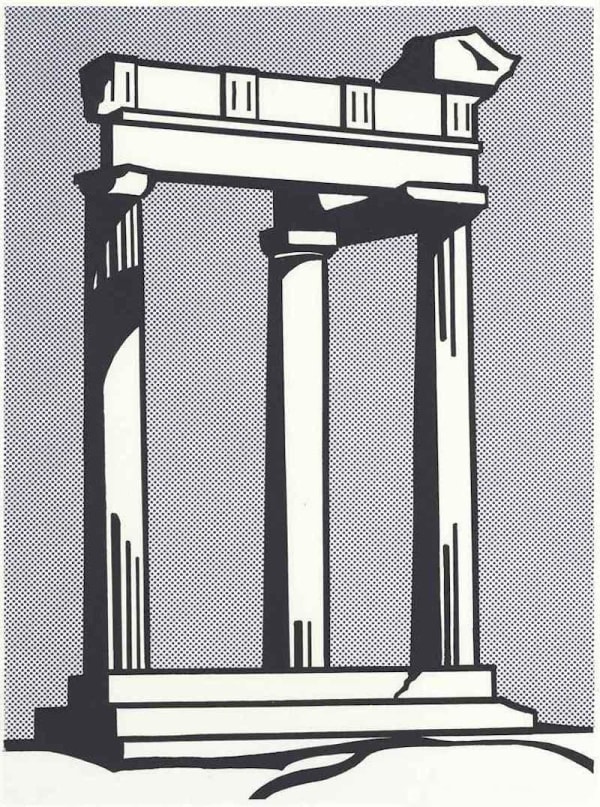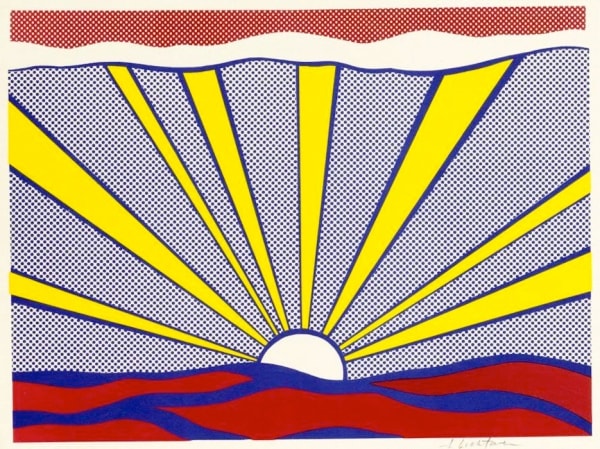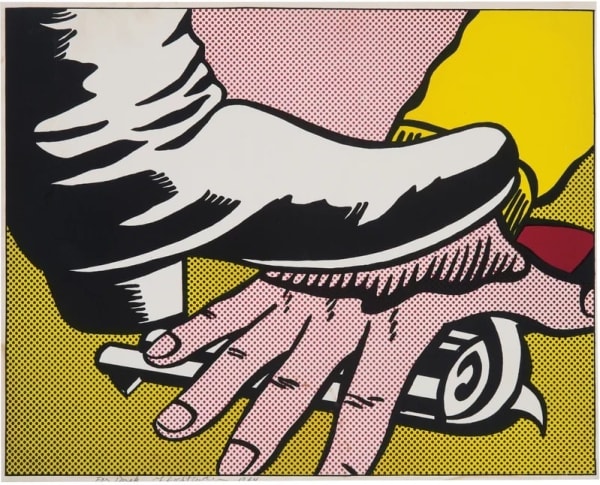
Roy Lichtenstein
95.6 x 70.2 cm
Roy Lichtenstein's Sweet Dreams, Baby print stands as an iconic example of the artist's distinctive pop art style and his exploration of mass media imagery. Created in 1965, this print is part of Lichtenstein's larger body of work that appropriated and reinterpreted comic book panels, advertisements, and other popular imagery.
At first glance, Sweet Dreams, Baby appears to be a straightforward representation of a romantic comic book scene. The central image features a young woman lying on a bed, her eyes closed in sleep, while a thought bubble above her head contains the phrase "Sweet Dreams, Baby" rendered in Lichtenstein's characteristic bold, black outlines and primary colors.
What sets Lichtenstein's Sweet Dreams, Baby apart is his innovative use of Ben-Day dots, a printing technique commonly used in comic books to create shading and texture. By incorporating these dots into his artwork, Lichtenstein not only pays homage to the visual language of comics but also challenges traditional notions of high and low art.
Moreover, Sweet Dreams, Baby can be seen as a commentary on the idealized representations of love and romance perpetuated by mass media and popular culture. Lichtenstein's use of clichéd phrases and exaggerated emotions serves to highlight the artificiality and superficiality of these depictions, inviting viewers to question the authenticity of such images and the role they play in shaping our perceptions of love and relationships.
In addition to its thematic depth, Sweet Dreams, Baby is also notable for its technical mastery and visual impact. Lichtenstein's precise lines, bold colors, and meticulous composition create a sense of immediacy and intensity that draws viewers into the scene, while his use of humor and irony adds layers of complexity and ambiguity to the artwork.
Overall, Roy Lichtenstein's Sweet Dreams, Baby print is a powerful and thought-provoking exploration of love, romance, and popular culture. Through his innovative use of imagery and technique, Lichtenstein invites viewers to reconsider the ways in which mass media shapes our understanding of the world and to reflect on the authenticity of the emotions and experiences it portrays.
-
 Roy LichtensteinNew Seascape (C. 42), 1966
Roy LichtensteinNew Seascape (C. 42), 1966 -
 Roy LichtensteinMoonscape C. 37, 1965
Roy LichtensteinMoonscape C. 37, 1965 -
 Roy LichtensteinTemple (C. II 3) , 1964
Roy LichtensteinTemple (C. II 3) , 1964 -
 Roy LichtensteinCrak! C. II 2, 1963
Roy LichtensteinCrak! C. II 2, 1963 -
 Roy LichtensteinRed Barn (C.89), 1969
Roy LichtensteinRed Barn (C.89), 1969 -
 Roy LichtensteinCrying Girl (C. II 1), 1963
Roy LichtensteinCrying Girl (C. II 1), 1963 -
 Roy LichtensteinSunrise (C. II 7), 1965
Roy LichtensteinSunrise (C. II 7), 1965 -
 Roy LichtensteinShipboard Girl (C. II 6), 1965
Roy LichtensteinShipboard Girl (C. II 6), 1965 -
 Roy LichtensteinFoot And Hand (C. II 4), 1964
Roy LichtensteinFoot And Hand (C. II 4), 1964 -
 Roy LichtensteinReverie (C. 38), 1965
Roy LichtensteinReverie (C. 38), 1965
Join our mailing list
* denotes required fields
We will process the personal data you have supplied in accordance with our privacy policy (available on request). You can unsubscribe or change your preferences at any time by clicking the link in our emails.
This website uses cookies
This site uses cookies to help make it more useful to you. Find out more about cookies.









